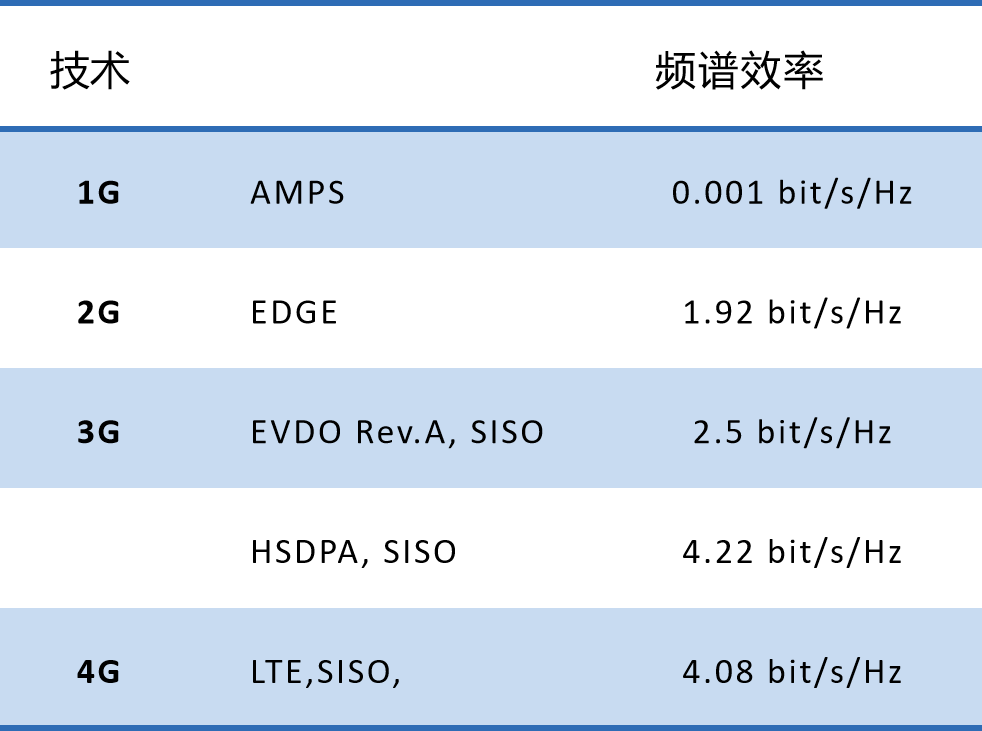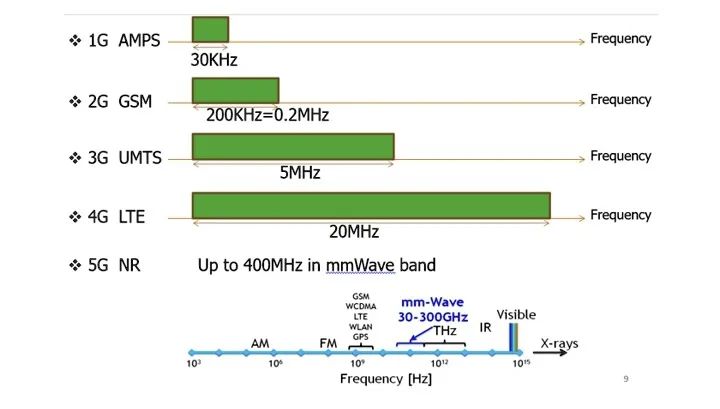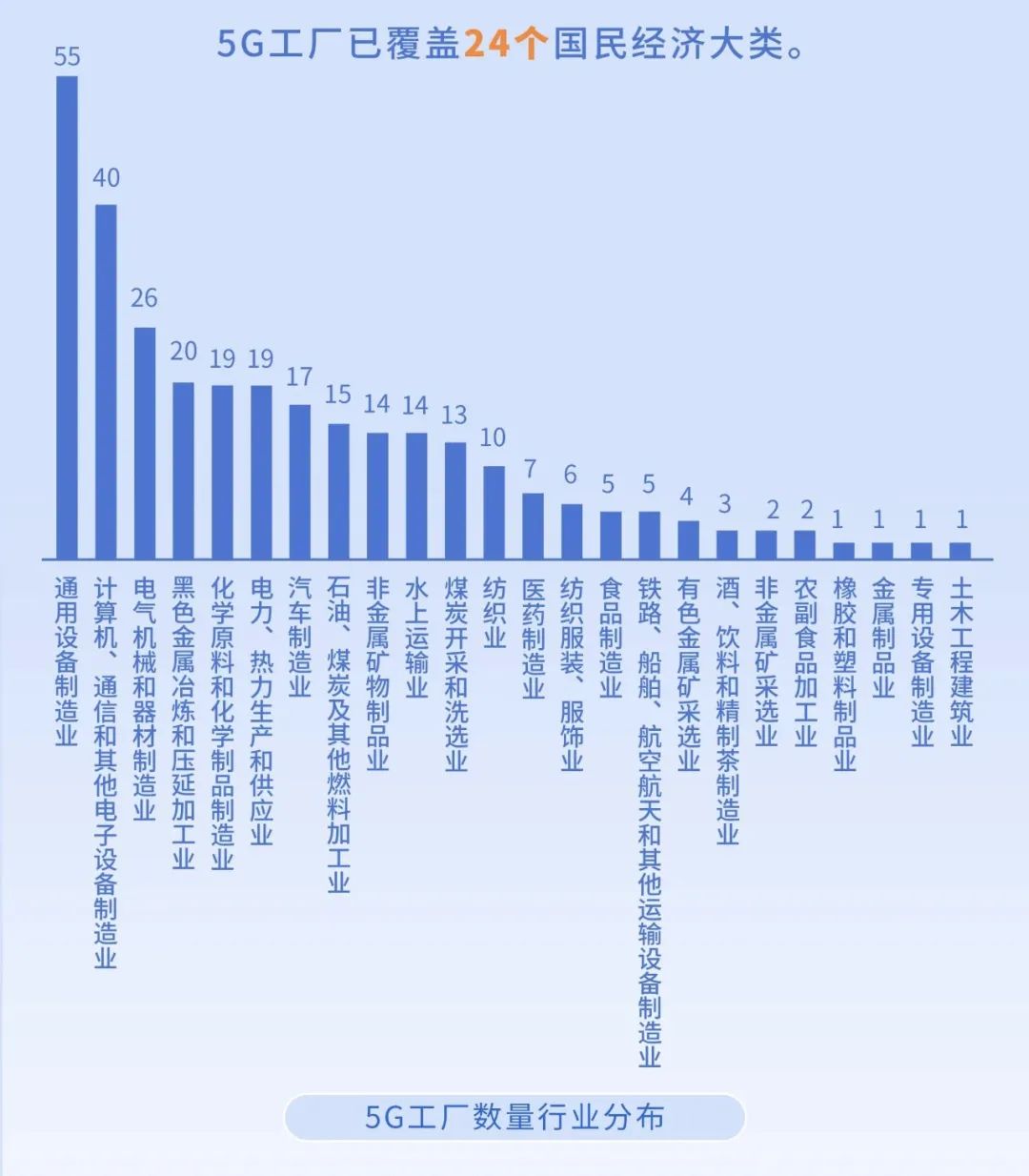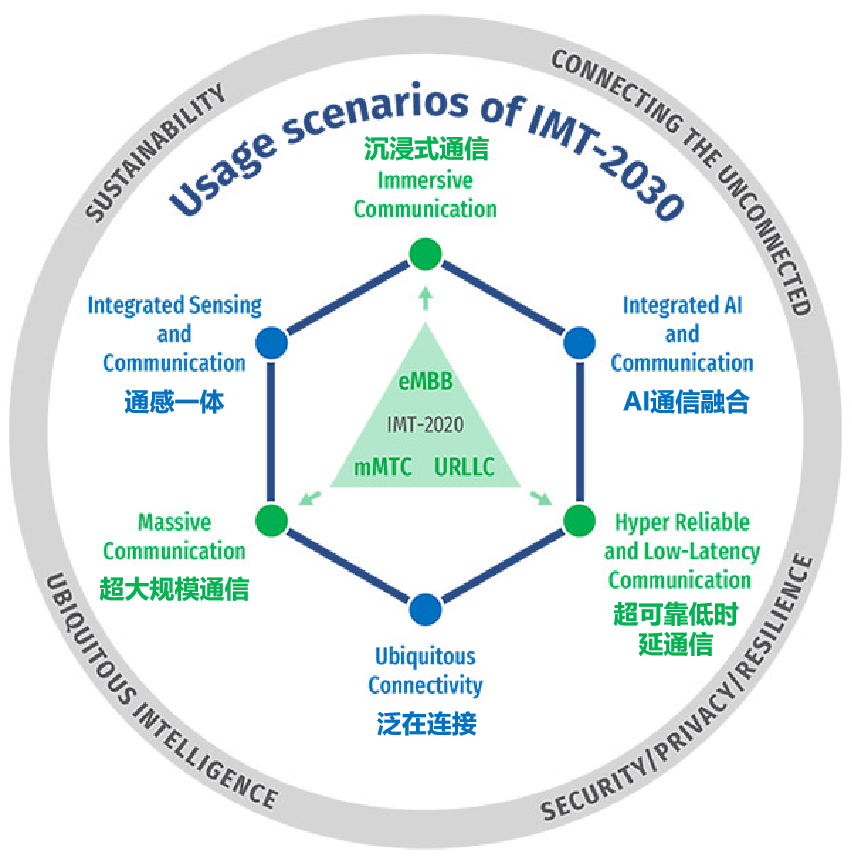6G is getting further and further away from us

6G is getting further and further away from us
Many years later, when faced with the tsunami-like surging speed of 5G, I will always clearly think of the afternoon when I first experienced 3G: I used more than 300 megabytes of traffic in a few hours, exceeding the one-month package.
Before this, I couldn't even use up 30M of traffic in a month. Indeed, in the 2G era, you could only read plain text on the Internet. If it was accompanied by a blurry picture, the word "picture" must be included in the title to tease people.
With 3G, high-definition pictures are as addictive as watching videos now. This hearty feeling made me both excited and terrified at the time.
4G is the beginning of Chinese people achieving freedom of traffic. Since then, no matter whether you are on the subway, train or airplane, you can always hear the noisy and rude laughter bursting out from various mobile phones.
However, the situation of 5G is quite different.
I still remember that at the beginning of 5G, there was a very hot question on Zhihu: "What can 5G be used for?" A few years later, another question comes to the fore: “Why is 5G suddenly not popular?”.
I think everyone can relate to these two issues. There are even many colleagues like this around me. While they are studying advanced 5G technology and talking about the bright future of 5G applications, they are also using 4G mobile phones that do not support 5G. It can be said that work and life are clearly separated.
Why is 4G widely praised, while 5G is widely questioned? Where will the next 6G go?
diminishing marginal benefits
Video is already the highest form of multimedia content on mobile phones. Now that the DOU is close to 18GB, most people have achieved freedom of data traffic. They can watch videos whenever and for as long as they want without worrying about the excess fees caused by excessive data traffic.
Due to the lack of killer applications, for ordinary users, the main benefit of 5G is currently lower traffic costs. For the most mainstream video applications, the experience perception is not obvious.
When looking forward to the vision of 5G, VR had high hopes as an imaginary killer application. But if you think about it carefully, it is impossible for everyone to wear a VR helmet when going to work, eating or shopping. This highly immersive application has extremely low requirements for mobility. Why do we have to use 5G if we have Wi-Fi at home?
Perhaps in some business scenarios such as multi-user large-space collaborative games, 5G does perform better than Wi-Fi, but niche needs cannot become a mass killer after all. Moreover, the current price of professional VR equipment is high, and the low-cost equipment has poor experience. There is still a long way to go to popularize the product.
So what about VR’s sister, AR? It can indeed be used as a wearable device for a long time. The prospect of loading various virtual and real auxiliary information on AR glasses is very imaginative. However, it is also currently facing the problems of high cost and immature ecosystem. It is very likely to develop first in the professional field and then extend to the consumer level.
In addition, there is the naked-eye 3D technology that has emerged in recent years. Although the current experience is not bad, the viewing angle of the screen is limited and it is difficult to support multiple people viewing. The current high-quality 3D video sources are also very limited. If you only convert 2D videos to 3D, the effect is better than nothing.
In addition, are the cloud mobile phones recently promoted by operators likely to become a killer? When the network coverage is good and the capacity is sufficient, 5G can enable cloud mobile phones to have a better experience. However, the biggest feature of mobile networks is uncertainty. No one wants to turn their mobile phones into bricks that cannot do anything due to disconnection at critical moments.
Okay, let’s summarize. At present, for ordinary users, video applications serve as the upper limit of speed and experiment requirements, and the experience is already relatively good. The user experience improvement brought by the increased network speed of 5G is limited, and as the marginal benefit decreases, it becomes even more insignificant.
At a time when there is no room for new user growth and the development of new services is slow, the 5G ToC market is bound to become mediocre. But this is understandable. Just like the development and popularization of electricity, it retreated from the spotlight and became as necessary as air.
tired shannon formula
When it comes to the capacity of wireless communication systems, the industry must call it the Shannon formula.
However, it has been more than 70 years since the founder proposed the Shannon formula, but there has been no major breakthrough in the basic theory of mobile communications.
 picture
picture
In fact, the spectrum efficiency of 4G single-transmitter single-receiver system (SISO) is basically the same as that of 3G, and even in the 5G stage there is not much enhancement. The reason why we can see a significant increase in network speed is almost entirely the result of increasing carrier bandwidth and spatial channels.
 picture
picture
From 3G to 4G, the carrier bandwidth has been increased from 5M to 20M. By 5G, the bandwidth has even expanded to 100M or even 400M. In order to obtain large bandwidth, frequency bands have been developed all the way up, from low frequency to medium frequency to millimeter wave, and 6G will also expand to terahertz. The wider the road, the faster the speed will naturally increase.
 picture
picture
In terms of space, 3G mainly uses single-channel transmission, while 4G uses dual-channel transmission as standard, 4-channel transmission as high-end configuration, and later it supports 8-channel transmission. MIMO has since entered the stage of history. The more roads there are, the faster the speed increases.
 picture
picture
By 5G, 32-channel and 64-channel transmission and reception have become mainstream. This is the so-called Massive MIMO. With 5G-A, the evolved version of 5G, 128 or even 384 antenna transceivers have begun to appear, and the theoretical network speed has increased significantly again. This is the origin of the 10G experience.
As for the features of 5G such as low latency and large connections, they are essentially a game of demolishing one wall to make up for the other. If there are more resources in total, some can always be freed up to do other things.
So, what is the cost of such great efforts to produce miracles?
The first is that the higher the frequency band, the worse the signal coverage capability. This makes 5G appear to have an amazing system capacity, but in fact it is just a blank check, and the cost of large-scale deployment is extremely high.
Secondly, the combination of large bandwidth and multi-antenna transceiver makes the physical layer processing algorithm of the signal extremely complex, which needs to be supported by increasingly powerful processing chips, and the cost of equipment is rising.
For chips, another fashionable term now is: computing power. The system’s thirst for computing power has driven us into the era of computing power.
The ubiquitous computing power coupled with the massive user data of mobile communication systems is the basis of artificial intelligence. Therefore, the current development direction of communication networks is: intelligence, which means introducing artificial intelligence algorithms into the physical layer to further enhance the processing performance of the system.
However, the most mainstream artificial intelligence algorithm at present is machine learning based on artificial neural networks. This is a practical technology that knows what it does but doesn't know why. In other words, although artificial intelligence can be trained to perform tasks well, it has difficulty explaining how it works.
Therefore, underlying technological breakthroughs cannot be achieved by relying on artificial intelligence.
Semantic communication is a direction that is being researched, but it is still in a very early embryonic stage. It is still unknown whether a theoretical breakthrough can be achieved and how much application space it can have.
Without Claude Shannon, eternity would be like a long night. Today, after 70 years of aging, the long night of mobile communications is coming again. We are waiting for a new game-breaker to ignite the future.
The shift in network capabilities
Since wireless communication networks are difficult to break through in basic theory, individual users are becoming less and less sensitive to network speed and traffic. Starting from 4G, standardization research began to shift, which is what we call from the "Internet of People" to the "Internet of Things" ".
So we saw the release of LTE-M, NB-IoT, and Cat-1. These IoT standards do not pursue speed, but require wide coverage, large connections, low power consumption, and low cost.
At the 5G stage, three major scenarios, eMBB, mMTC and uRLLC, have been proposed since the beginning of the standard formulation. Among them, only eMBB is available for consumers. Both mMTC and uRLLC are aimed at the Internet of Things rather than the Internet of People.
In addition, 3GPP R17 also introduced RepCap. This seemingly inscrutable term is actually nothing more than an abbreviation for "reduced capabilities" and is intended to create a "5G version of 4G." There is no other reason. Most of the Internet of Things does not require too high speed, but it is very cost-sensitive.
So what technologies will be introduced in the second half of 5G, that is, 5G-A? Core technologies such as synesthesia, full-duplex, non-terrestrial networks, and passive Internet of Things are not for ordinary consumers.
In recent years, words such as “private network” and “digital transformation” have appeared frequently along with these IoT technologies. In other words, when implementing the Internet of Things, 5G is increasingly existing in the form of private networks to solve specific production needs.
For example, steel plants have their own private networks, petrochemical plants have their own private networks, automobile plants have their own private networks, coal mines have their own private networks, and ports also have their own private networks.
The characteristic of these private networks is "dedicated". Different scenarios have different bandwidth, delay, jitter and reliability requirements. Unlike the "best effort" service of traditional networks, private networks require certainty. Currently, 5G is busy solving these problems.
At present, my country has built more than 20,000 5G industry virtual private networks, integrated into 67 major categories of the national economy, and has more than 94,000 application cases. The "2023 5G Factory Directory" recently released by the Ministry of Industry and Information Technology selected 300 completed 5G factories as benchmarks, covering 24 major categories of the national economy.
 picture
picture
According to GlobalData, the global IoT market will exceed US$1 trillion in 2027, of which enterprise IoT accounts for 73%. As early as 2022, my country's cellular IoT users will exceed the number of mobile phone users for the first time.
Although the Internet of Things and industry private networks are not completely equivalent, it also shows that the undercurrent that was once shadowy on the bottom of the sea has developed into a huge wave that envelopes everything.
In China, because licensed spectrum is only available to operators, companies must cooperate with operators to build their own private networks. Internationally, many countries can directly allocate spectrum to enterprises, which means that the construction of private networks no longer requires the participation of operators.
5G has been decomposed into a large network plus countless industry private networks. Moreover, as large networks become increasingly silent, private networks are increasingly considered by the industry to be the future direction.
However, these private networks have nothing to do with the general public. No one has the heart to pay attention to and study areas that are beyond their reach. The popularity of the topic of 5G will surely fade away as the big network goes silent, and small circles will ultimately be unable to make any waves.
Just like electricity mentioned earlier, this is a historical necessity.
So, what about 6G?
 picture
picture
The picture above is the ITU’s vision for 6G. It can be seen that immersive communication can be used for consumer-level applications such as VR and AR, ubiquitous connectivity supports integrated air, space, ground and sea communications to support some emergency communications, AI and communication integration can improve underlying efficiency, and the rest are geared toward specific scenarios. Yes, the "People's League" has changed from the absolute center of gravity to the edge.
6G will continue to move forward on the road that 5G has traveled, and will gradually become farther and farther away from our daily lives.
write at the end
Given that 5G has entered the second half of application implementation and value demonstration, and 6G has also entered an active research period, the topics I will consider in the future can be roughly divided into the following two directions.
The first direction is 5G industry solutions and application results, which I call “5G Dream Factory”.
The second direction is the research dynamics of 6G, which I call “6G Hub”. Most of the 5G-A technologies will not be popularized until the 6G stage, so they are also included in this section.
Thank you all for your attention and support.